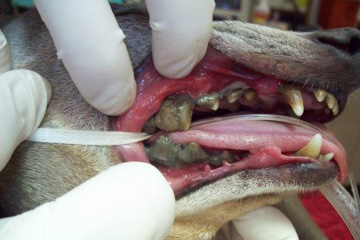
A Day at Adobe
Why we do what we do
We value our client’s trust in our medical care. One of the most nerve-wracking concepts as owners can be dropping your pet off at our clinic for a procedure under general anesthesia. In this post, we would like to highlight one of the most common procedures done under anesthesia, a dental prophylaxis. It is our goal to help you, as the owner, feel comfortable leaving your pet with us all day. We want you to be informed about what we do “in the back.”
Q: Why do we recommend dental preventative cleanings?
A: To reduce the risk of dental disease.
Dental disease that goes untreated can result in tooth root abscesses which are very painful and require emergency attention. Your dog may have dental disease if their breath is unbearable, they are pawing at their mouth, or not wanting to eat. They may also lick their lips often. All this can be avoided with preventative dental cleanings! Below is a dog and cat in serious need of a dental prophy!

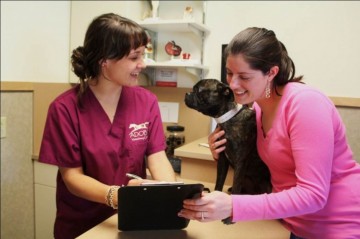
Morning Check-In
The process begins early in the morning when you drop off your pet and give consent for the procedure. We double check their current medications and make sure they have not eaten breakfast.
Weight is taken so we can calculate your pet’s doses accurately.
Treatment Area
Once we have authorization we will bring your pet to the treatment area. One of our small animal doctors, Dr. Shelly Martin or Dr. Aimee Ratzlaff will perform a full body exam to make sure they are healthy for anesthesia. Your pet will be set up in a kennel with a towel and cage card for identification.
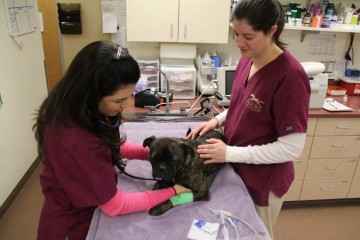
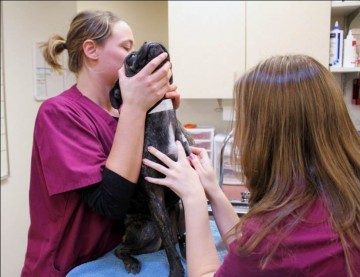
Preoperative blood work
Blood work allows us to evaluate your pet’s internal organ function. We will review the blood work results and determine if internally they are healthy for anesthesia.
IV Catheter placement
Our next step is to place an IV catheter, this is usually done in their cephalic vein which runs along the top of their front legs. We will shave a rectangular area of hair for their catheter. The catheter gives us direct access to administer the anesthetic as well as run IV fluids to keep them well hydrated.
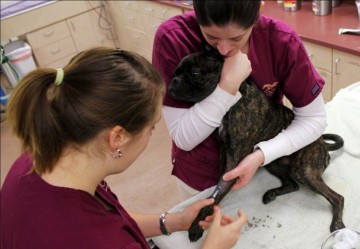

Pre-medication
An injection of a sedative and pain relief is given intramuscularly 20 minutes before their procedure. This will start relaxing them and minimizing any pain or discomfort they might experience.
Anesthetizing
An anesthetic injection is administered via their IV catheter which slowly causes them to fall asleep. This allows us to place a latex tube, called an endotracheal tube, in the trachea to deliver oxygen and anesthetic gas during the procedure.
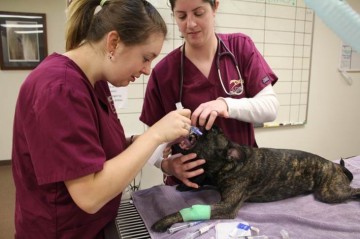
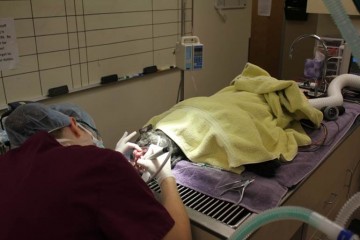
Monitoring
A trained technician attaches monitoring equipment to your pet that connects to a monitor, allowing us to evaluate their vital signs such as their pulse, EKG, respirations, temperature, and oxygen levels in the blood. A technician will be monitoring your pet as soon as the are asleep under anesthesia until they are awake and alert after the procedure
Radiographs… Cleaning… Polishing… Extracting
The dental procedure begins with full mouth radiographs, the doctor will then evaluate the roots of the teeth as well as probe the gum line to look for pockets. A trained technician will ultrasonically clean and polish the teeth. If there are any teeth with >50% bone loss, root abscesses, mobility, or root exposure they will be extracted.
Recovery
Your pet will be placed in a comfortable kennel for recovery where they will continue to become more alert and awake. Once fully awake we continue checking on your pet every 10 minutes and make sure they are not experiencing any pain. At this point we will take them out for “potty time” as well
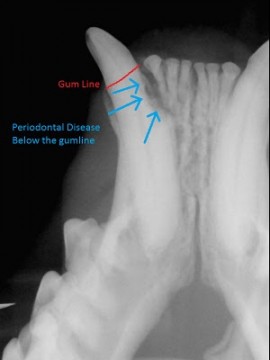

Time to go home!
Once the anesthesia has worked out of their system and we are certain that they are fully recovered and stable you will be able to pick them up, which is usually in the late afternoon. The doctor will set aside time to talk about the procedure with you and a technician will go over home care instructions and take home medications as well.
We will see you in 5-7 days if your pet has had teeth extracted to confirm that the extraction sites are healing well and that the dissolvable suture we placed is holding.







